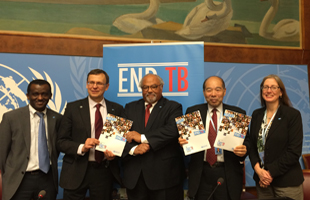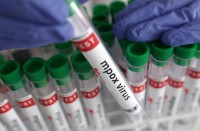
Ahead of the World Tuberculosis Day on March 24, the World Health Organization (WHO) is calling for global solidarity and action to support a new 20-year strategy which aims to end the global tuberculosis epidemic.
Recent years have seen significant progress in the fight against TB, with over 37 million lives saved, but WHO reminds that much more needs to be done.
In 2013, 9 million people fell ill with TB, almost half a million of whom have a multi-drug resistant disease which is far harder to treat. An estimated 1.5 million people still die of tuberculosis each year.
The disease frequently has devastating economic consequences for affected families, reducing their annual income by an average of 50%, and aggravating existing inequalities.
WHO’s End TB Strategy, adopted by governments at the World Health Assembly last year, is designed to drive action in three key areas: integrated patient-centred TB care and prevention for all in need, including children; bold policies and supportive systems; and intensified research and innovation.
The strategy sets ambitious targets of a 95% reduction in TB deaths and a 90% reduction in cases of TB by 2035. An important milestone to be reached within the next five years (2020) is the elimination of catastrophic costs for TB patients and their families. Eliminating catastrophic costs is feasible through making care more accessible and through financial protection schemes to minimize medical and non-medical costs as well as income loss.
2015 is seen as a critical year for action to adapt and roll out the strategy in diverse country settings. Achieving success for the strategy will require the TB community around the world to work together to leverage alliances and resources.
The strategy addresses tuberculosis among vulnerable groups, including people living with HIV who develop TB. In 2013 there were an estimated 1.1 million people co-infected with HIV and TB, 360 000 of whom died.
Persistent funding gaps in the TB response also need to be filled to drive progress towards ending the global epidemic. WHO says it is vital that resource gaps of USD 2 billion per year for TB interventions and USD 1.39 billion per year for TB research be filled. Accelerating research and innovation in basic science, new diagnostics, drugs and vaccines and their rapid uptake, will be critical to break the trajectory of the epidemic and reach the global targets.
United Nations/World Health Organization








